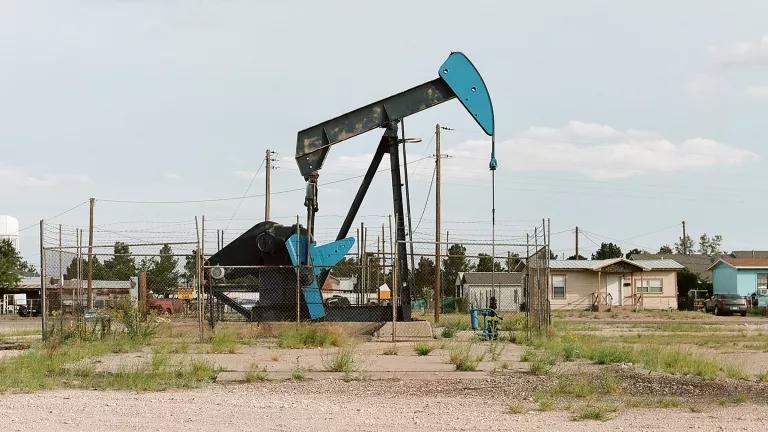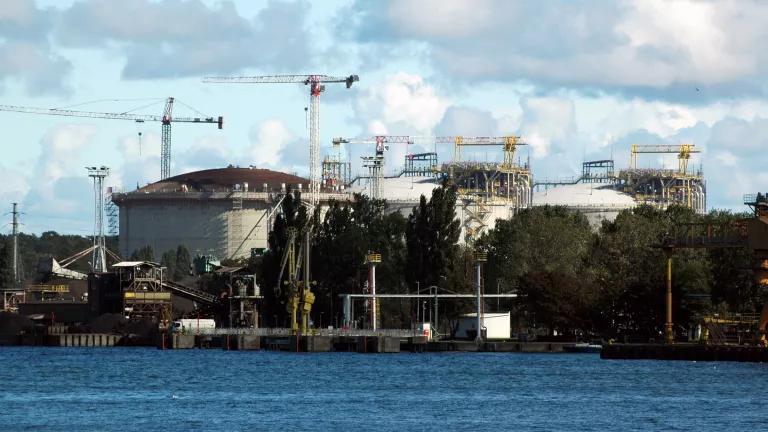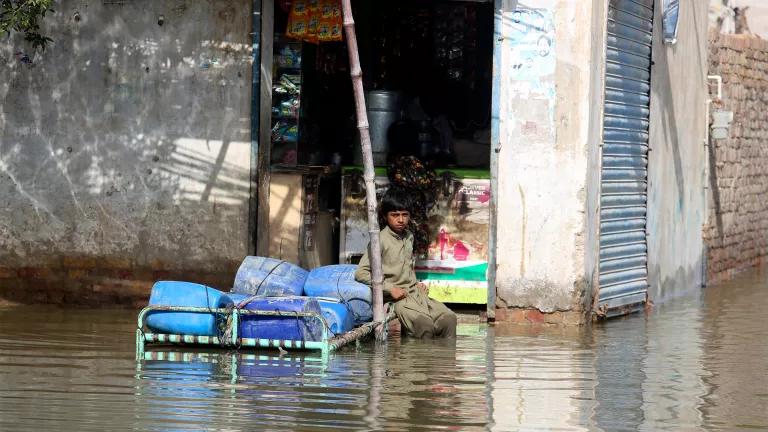Fossilized Finances: Oil and Gas Subsidies in the Permian Basin
A new NRDC report shows how, despite the need to curb fossil fuel production, outdated tax giveaways incentivize further extraction in the country's largest oil and gas region.

An oil pumpjack near homes in Monahans, Texas
Coauthored with James Povijua, NRDC's senior advocate, Equity and Community Partnerships
New fossil fuel development is incompatible with the world goal of limiting global warming to 1.5 degrees Celsius. However, the United States continues to plan for future fossil fuel development, most of which will occur in the Permian Basin, a shale basin that is 250 miles wide and 300 miles long, covering much of western Texas and southeastern New Mexico. The area already accounts for nearly half of all U.S. crude oil production, and production in this region is projected to nearly double by 2030.
A new NRDC/Earth Track report shows how, despite the need to curb growth in fossil fuel production, factors such as outdated tax giveaways and government grants to the oil and gas sector, as well as low liability caps, incentivize further development and extraction. So, too, do special regulatory exemptions for the oil and gas sector. These public subsidies (even those with a relatively small fiscal impact in a particular year) artificially distort the market and attract private investment that would otherwise flow to industries that are less of a threat to the planet and its people. These subsidies place an unfair burden on the shoulders of taxpayers already impacted by the effects of fossil fuel–charged climate change and pollution. And they direct taxpayer monies to an industry that already has sufficient capital to fund its own work, clean up its own messes, and reap substantial profits.
Among the top-line findings in the report:
Taxpayer subsidies distort the market for oil and gas produced in the Permian. Our survey of subsidies that benefit the fossil fuel supply chain in the Permian Basin found 57 individual federal and state giveaways of public resources and special exemptions. Seen together in one list for the first time, this inventory demonstrates the extent to which taxpayers are propping up this polluting industry.
The number of state oil and gas subsidies exceeds federal subsidies. While the extent of fossil fuel subsidies at the federal level has received significant attention in the media and among policymakers, widespread and often long-standing oil and gas subsidies at the state level have received less focus. Our report shows that there are a substantial number of state subsidies, which can be very large. Both federal and state subsidies should be eliminated.
Nearly three-quarters of subsidies support exploration and production. Approximately 70 percent of the subsidies we identified support finding new wells and pumping oil and gas from them. These types of subsidies are particularly harmful to efforts to combat fossil fuel–driven climate change and local pollution, as they can lock in decades of pumping fossil fuels from the wells they help create.
Just a handful of state subsidies cost billions of dollars in Texas and hundreds of millions in New Mexico. If eliminated, the funds could be redirected to true public priorities, such as establishing programs for a just transition of industry workers or supporting education, health care, and other concerns.
To prevent full climate catastrophe and curb further environmental injustices, it is essential to stop the flow of public subsidies to oil and gas company operations, especially in the Permian Basin. This money should be redirected to true public priorities, such as ensuring a just transition for workers in the oil and gas sector to climate-friendly industries.

Illustration: Muti



